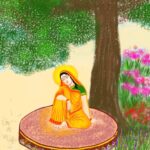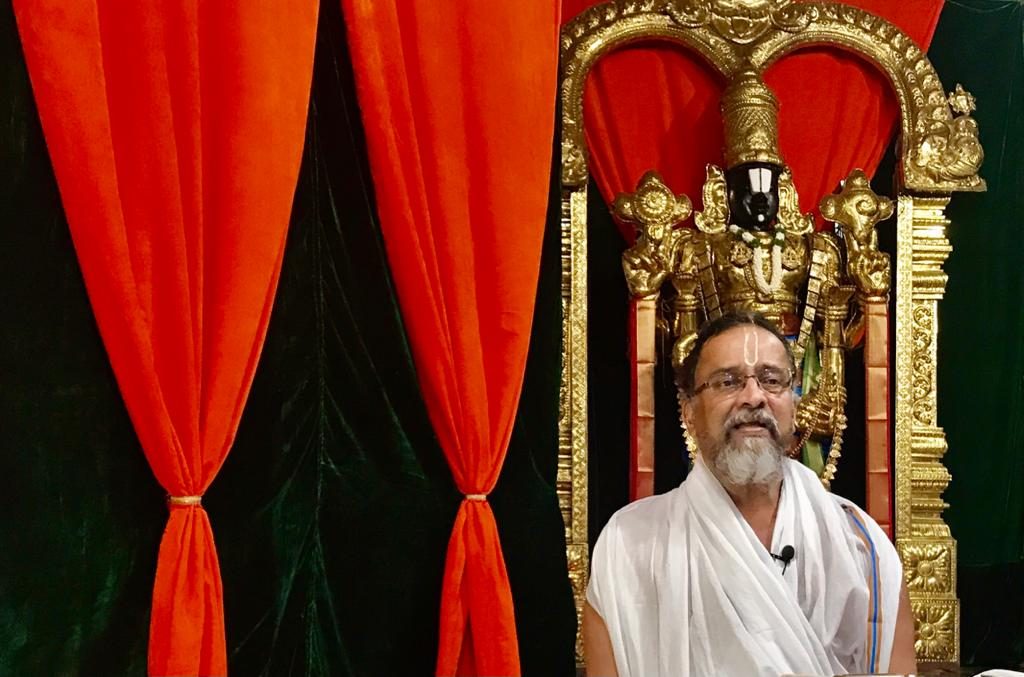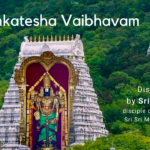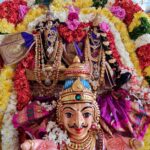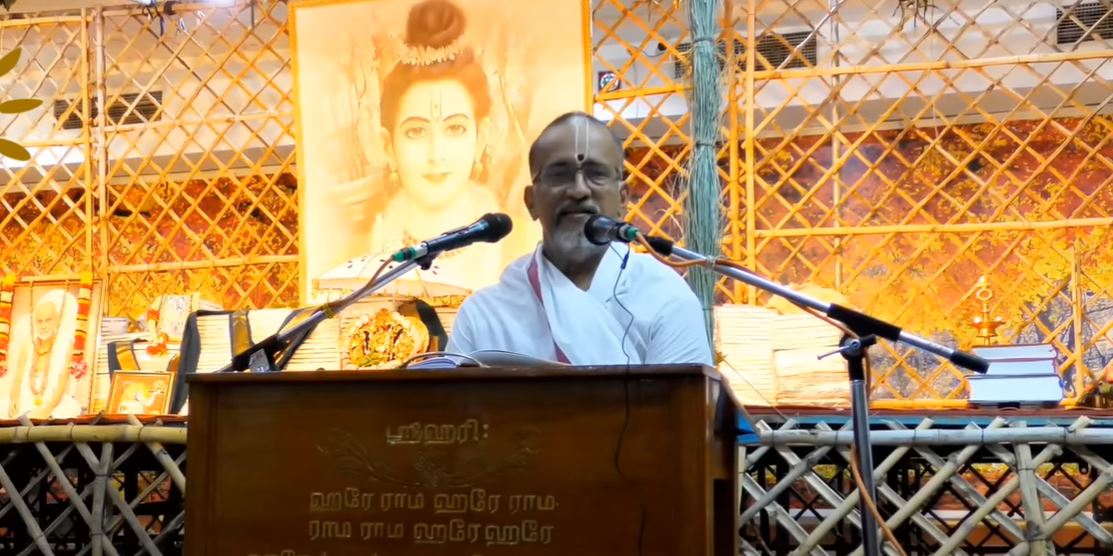
Relishing the Rasa in Ramayana: Sri Rama’s Love for Sita Devi, and more
Our Puranas and Itihasas can be enjoyed in many different dimensions – as Bhagavan’s lovely leelas and an extolling of His wonderful qualities; as profound, symbolic philosophy; as beautiful poetry and literature; as historic and scientific facts, and more. All of these are true, and that is indeed the greatness and divinity in our shastras. We can relish them through each of these angles, depending on our purpose.
During the Ramayana Navaham in Chitrakoot (Sep 2022), Sri Swamiji shared numerous interesting insights into the Ramayana from all of these different angles, and in his own inimitable style, extolled Sri Rama’s gunas (wonderful qualities) at every opportunity, even while delving into each of these dimensions!
We are sharing below some lovely rasas about Sri Rama’s qualities that he shared while speaking about the philosophy of Ramayana, and the subtle beauty of prema that is shown by Srimad Ramayana.
The philosophical background of Ramayana is that Sita Devi represents all of us as the jeeva, while Sri Rama is Bhagavan. Sage Vishwamitra was the first to symbolize the Guru who brings the jeeva and Bhagavan together. As long as the jeeva continues to stay with Bhagavan with its mind at His lotus feet, it remains happy. But the moment it gets attracted by the mAyA of the world, it gets separated from Bhagavan and suffers, until Bhagavan sends the Guru, represented here by Hanumanji, who first gives solace to the jeeva and then brings Bhagavan Himself to the jeeva, thus reuniting them both.
In our shastras, a deer is generally used to represent mAyA. We see this even in the story of Jadabharata from Srimad Bhagavatam where the King Bharata renounces even his kingdom, family, comforts in his quest for Bhagavan, but then falls prey to mAyA in the form of attachment to a deer.
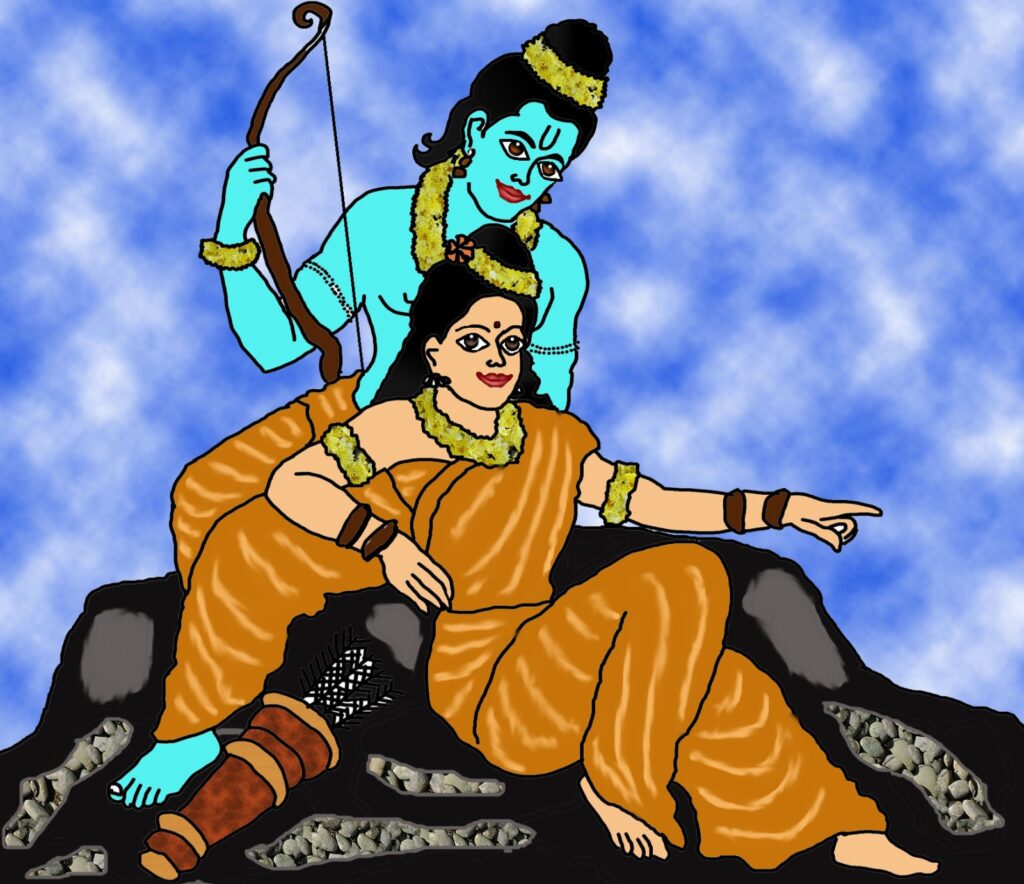 So here in Srimad Ramayana, Sita Devi gets a desire for the deer. Sri Swamiji said that, in fact, Sage Valmiki shows here, not an ordinary deer, but a strange and peculiar golden deer that is not in normal creation; because at least then Sita Devi should realize that it could be a trap. But she (the jeeva) gets caught in the snare of mAyA and falls into the trap. She desires the deer deeply. Sri Swamiji pointed out here that there are many words of many shades in Sanskrit for ‘desire’. Sage Valmiki deliberately chooses the word ‘abhirAmaha’! Why? He is saying indirectly that more than Rama, she was enamored by the deer. We fall into the trap of mAyA when we get enamored by the world more than Bhagavan!
So here in Srimad Ramayana, Sita Devi gets a desire for the deer. Sri Swamiji said that, in fact, Sage Valmiki shows here, not an ordinary deer, but a strange and peculiar golden deer that is not in normal creation; because at least then Sita Devi should realize that it could be a trap. But she (the jeeva) gets caught in the snare of mAyA and falls into the trap. She desires the deer deeply. Sri Swamiji pointed out here that there are many words of many shades in Sanskrit for ‘desire’. Sage Valmiki deliberately chooses the word ‘abhirAmaha’! Why? He is saying indirectly that more than Rama, she was enamored by the deer. We fall into the trap of mAyA when we get enamored by the world more than Bhagavan!
Moreover, Lakshmana (who represents the intellect) sees through the trap. He tells Rama clearly, without doubt, that it is Maricha. On one side is Lakshmana’s intellect. On the other side is Sita Devi’s desire. There is always a fight between the heart and the brain, emotion and intellect. We need to suppress our emotion and take decisions based on the intellect. Sita Devi also hears what Lakshmana says. But her desire is so deep that the intellect has no effect on her.
Here, Sri Swamiji made a wonderful point. Knowing this to be Maricha, why did Rama still choose to go after the deer? Sri Swamiji said that Rama here is acting as Bhagavan! What is the svabhAva (nature) of Bhagavan? When we go and pray to Bhagavan in the temple and ask for a worldly prayer, He will not say, “O Devotee, don’t ask for a temporary, worldly prayer; ask for moksha, or bhakti at My Feet!” Instead, Bhagavan grants the prayer that is asked. And, Sri Swamiji said with a chuckle, later if the devotee finds himself/herself in trouble because of that desire, it is Bhagavan who comes to protect the devotee also!
So here, even though Lakshmana cautioned Rama about the golden deer, Rama acting as Bhagavan here, chose only to fulfill what His devotee desired. Rama tells Lakshmana, “Am I afraid of Maricha? If it is a deer, I shall bring it. If it is Maricha, I shall kill him.”
Sri Swamiji here asked a key question – Why does Rama desire to fulfill Sita Devi’s prayer? We all go to the temple and pray so much. Has Bhagavan fulfilled all the prayers?
Sri Swamiji answered beautifully – Rama loved Sita Devi dearly and she had never ever asked Rama for anything in all their years of marriage. He always wished he could get her something she wished for, but she had asked for nothing. Now, for the very first time, she had asked him for something. This moved Rama so much that he lost his balance. When a devotee binds Bhagavan with love, even Bhagavan loses His balance, moved by the love of that devotee, said Sri Swamiji.
Srimad Ramayana shows uniquely how Bhagavan loves His devotee and how He too pines immensely for His devotee who is pining for Him! Sri Swamiji beautifully pointed out here that how usually it is the nAyika (devotee) who pines for her Lord and it is the yearning of the nAyika that is elaborated on. But in the Ramayana, the opposite is shown. How Sita Devi suffered during her period of separation in Lanka, yearning constantly for Sri Rama, we only learn about much later. But from the moment Sri Rama discovers that Sita Devi has been abducted, he constantly laments, worries, and pines for her. Chapter after chapter, kanda after kanda, Sage Valmiki shows us Sri Rama’s yearning for Sita Devi; how he barely sustains his life, how he laments to Lakshmana, and even amid all his leelas of meeting Sabari, Hanumanji, Sugriva, killing Vali, accepting Vibheeshana’s surrender, etc. there is his constant undercurrent of yearning for Sita Devi.
Sri Swamiji would say that while Krishna avatara shows prema (love) openly and dharma subtly, Rama avatara on the other hand, shows dharma openly, and prema subtly. This subtle beauty can only be discerned and given to us by mahatmas. And theirs is the right source to listen to the story of Ramayana.
Excerpts from Sri Swamiji’s talks at Chithrakoot Dham
Click here to go back to the October 2023 newsletter page:
https://godivinity.org/newsletters/nama-dwaar-newsletter-october-2023/

